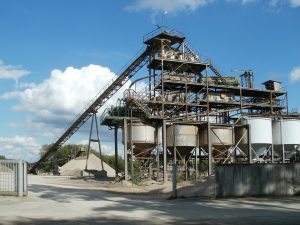Print a Sign-In Sheet | Spanish Version Coming Soon
The world of material handling is always moving on the wheels of the conveyor system. Keeping up is good, but keeping up safely is much more important. With so many moving parts, it can be easy for someone to get hurt along conveyor beltlines.
Several accidents involving conveyor belts can be attributed to accessibility to danger zones. The majority of these occur during maintenance activities with conveyors still in operation and danger zones unprotected.
Over a period of six years, 21 coal miners died in conveyor belt accidents. The leading cause of these accidents was trying to remove material sticking to a roller or pulley while the belt was running. Consider the following:
- In these fatal accidents, belt speeds were typically in the range of 300 to 500 feet per minute (fpm). This means the belt was moving from 5 to over 8 feet per second.
- For the average person, the time needed to react to an unexpected sensation is about one second.
Putting these facts together shows why working near a running conveyor belt is so dangerous. Even at 300 fpm, in that one second that the average person needs to react, the belt moves over the pulleys and rollers a distance of 5 feet. That’s far enough to draw your tool, your loose clothing, gloved or bare hand, and arm, into a pinch point before you can react.
Take these tips to work with you:
- Don’t take chances around conveyor belts.
- Don’t perform work that will expose you to a pinch point, like clearing caked material from a roller, while a belt is in operation.
- When working in close proximity to conveyors, ensure appropriate clothing is worn to prevent the potential for entanglement.
- Only work on a conveyor that is locked and tagged out.
- If you are working near a stopped belt, and a start-up warning is given, stop what you’re doing and get clear!
- Never cross a moving belt.
- Always cross at a bridge or designated crossing point.
KEMI does not assume liability for the content of information contained herein. Safety and health remain your responsibility. This information is to be used for informational purposes only and not intended to be exhaustive or a substitute for proper training, supervision, or manufacturers’ instructions/recommendations. KEMI, by publication of this information, does not assume liability for damage or injury arising from reliance upon it. Compliance with this information is not a guarantee or warranty that you will be in conformity with any laws or regulations nor does it ensure the absolute safety of any person, place, or object, including, but not limited to, you, your occupation, employees, customers, or place of business.

